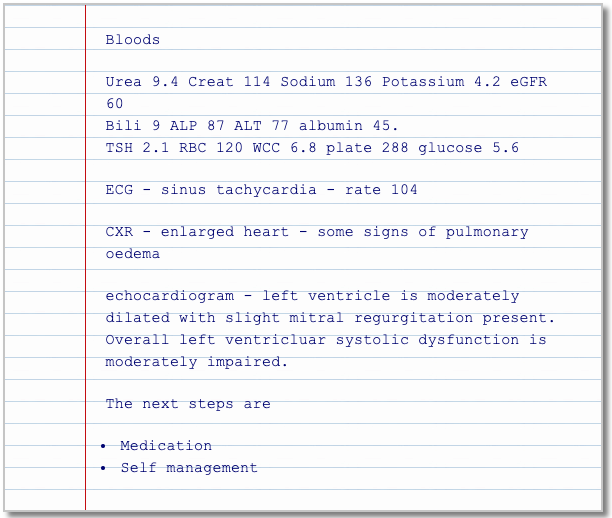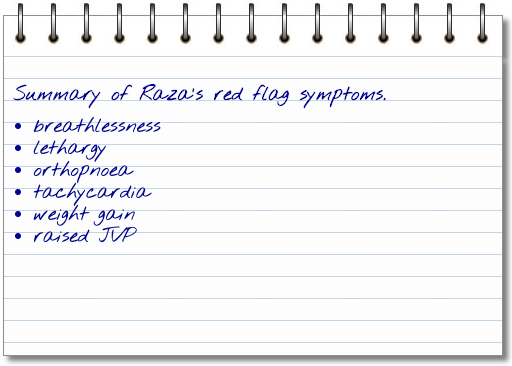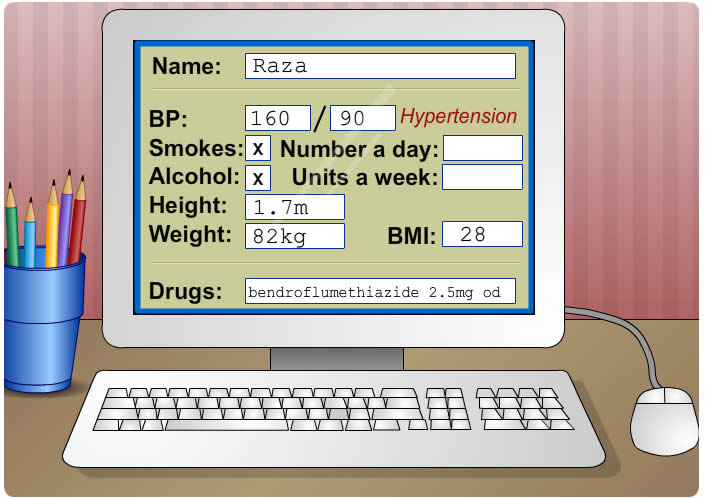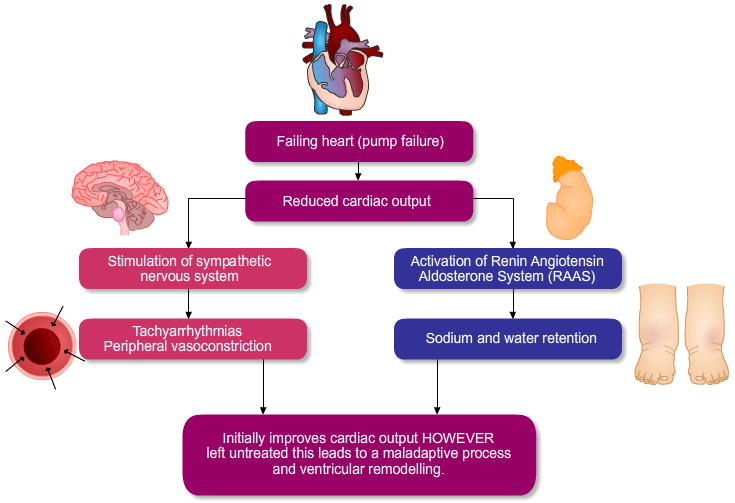
Raza has had his echocardiogram which demonstrated HF-REF. This is probably due to his hypertension but he may require further investigations to confirm aetiology. Today he is in the practice to discuss his results.


Raza has had his echocardiogram which demonstrated HF-REF. This is probably due to his hypertension but he may require further investigations to confirm aetiology. Today he is in the practice to discuss his results.

See the Additional information box for more information on BNP.


Once a diagnosis of heart failure has been made, the severity of symptoms and level of incapacity can be categorised according to the New York Heart Association (NYHA) classification. This classification recognises four classes in which symptoms increase in severity, increasingly limiting the ability of patients to undertake normal daily activities.
Task Force for the Diagnosis and Treatment of Chronic Heart Failure, European Society of Cardiology. Guidelines for the diagnosis and treatment of chronic heart failure. Eur Heart J 2001;22:1527-60. See the Additional Information box for more information on the NHYA classification.


Raza is a 48 yr old man who has been called to the surgery for his annual hypertensive clinic.

Heart Failure progression is often described as a vicious circle. This refers to the maladaptive process where the body tries to compensate for the changes caused by the heart failing. This leads to a series of other processes which leads to a circle of heart failure. All the interventions utilised within heart failure management aim to improve symptoms and slow down progression. This simplified model illustrates the processes that occur as a result of a failing heart.

There are various other additional influences on this decompensatory cycle. These include neurohormonal responses, cell necrosis and death.
CHD is the most common cause of HF, but below are some other common causes and a brief description of how this occurs.
| Damage to the heart muscle: | Excessive workload of the heart |
|---|---|
|
|